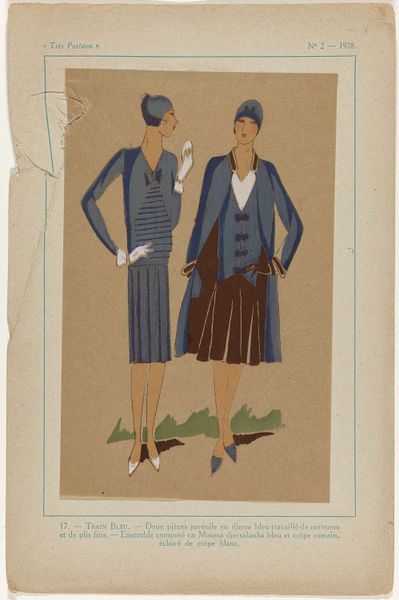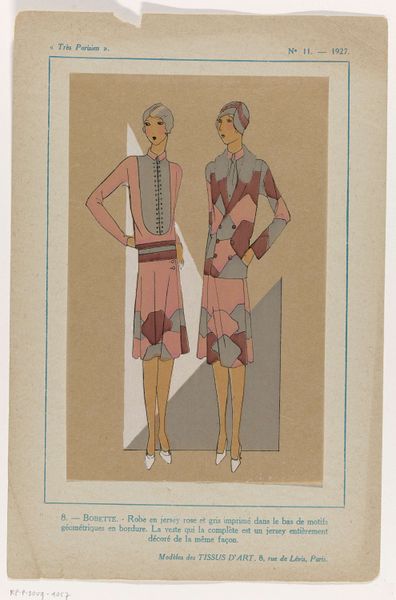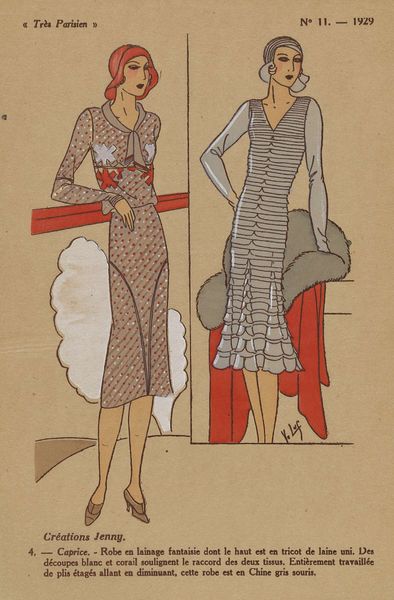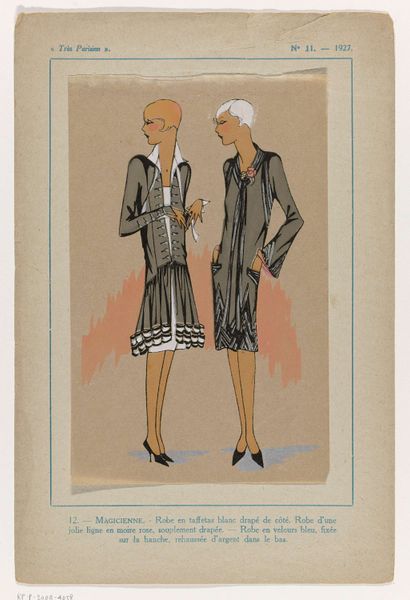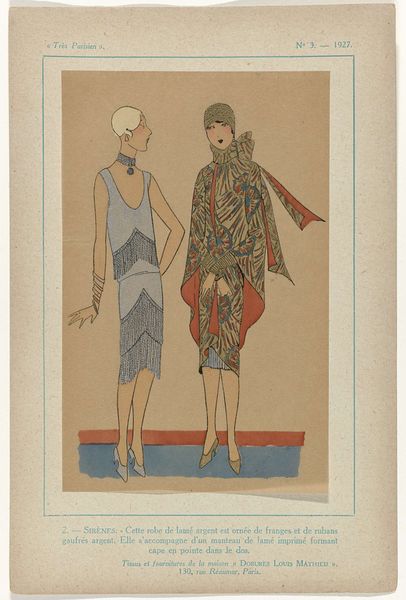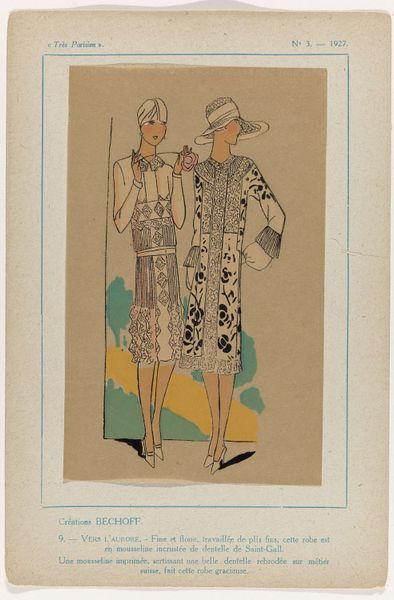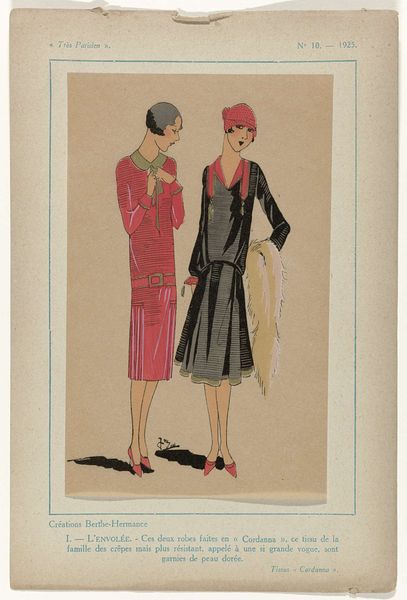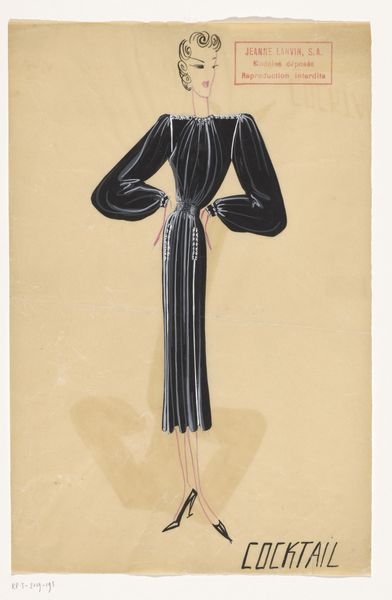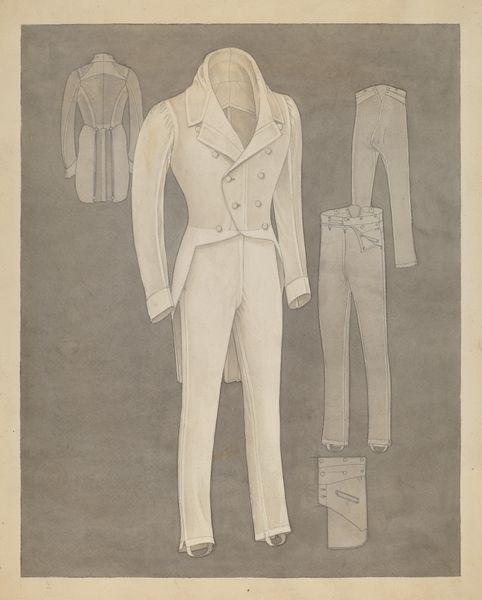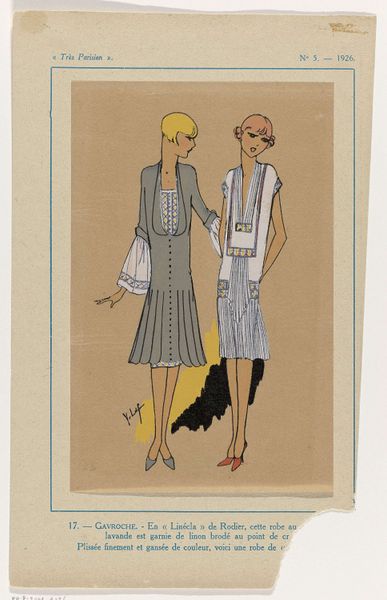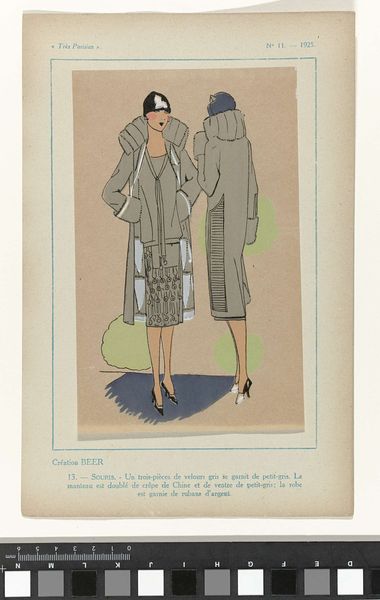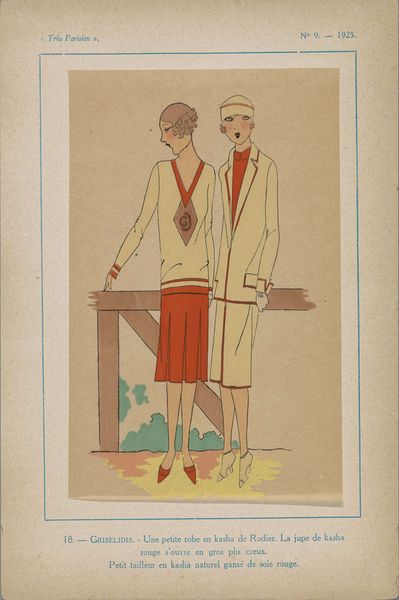
drawing, ink
#
portrait
#
art-deco
#
drawing
#
figuration
#
historical fashion
#
ink
#
character design
#
fashion sketch
Dimensions: height 270 mm, width 181 mm
Copyright: Rijks Museum: Open Domain
Curator: What strikes me immediately about this image is its deliberate flattening of form. The lines are so clean, and the color palette, while limited, exudes a chic restraint. It almost feels like a blueprint for an aspirational lifestyle. Editor: Indeed. This is a fashion plate titled "Trés Parisien: La Mode, Le Chic, L'Elégance," dating back to 1931. The artist, currently listed as anonymous, captured a very specific moment in Parisian culture. We can appreciate it here at the Rijksmuseum. Curator: "Trés Parisien"—very Parisian, so confident in its statement. What stories do these women tell of their era? The sharp tailoring, those distinct cloche hats... it's a study in art deco aesthetics. There's a sense of modernity intertwined with classical elegance. Editor: I would say this image, crafted from ink and drawing, perfectly encapsulates the interwar period. It mirrors a time when women were claiming more space in society, expressing themselves through fashion. Their attire embodies changing socio-political dynamics, with Parisian style serving as a beacon. Curator: Consider the choice of ink; the definitive lines, creating both structure and movement. I'm drawn to the details in the fur collars, the suggestion of soft textures using only precise, controlled marks. This economy of means amplifies its symbolic power, each stroke carrying cultural significance. Editor: Precisely. I imagine this illustration circulating in fashion magazines of the time. Think of its power as a cultural touchstone, defining norms of beauty and aspiration, and promoting a vision of idealized womanhood which often served complex socio-economic and political agendas. The public role of such images can't be overlooked. Curator: Looking closely at the background too—that subtle geometry and red accent further amplify its graphic impact. This illustration clearly aims beyond mere garment display, embedding subtle cultural cues which tap into our desires, even today. Editor: Absolutely. These images are time capsules and powerful cultural artifacts. I find new layers of understanding with each viewing. Curator: A true synthesis of form, function, and silent narrative! I will be considering this work and its ability to capture an era, and project style through minimalist design. Editor: Yes, I’ll consider its fascinating place in the fashion ecosystem of the 1930s, its impact on constructing identity, and perpetuating ideas of beauty.
Comments
rijksmuseum about 2 years ago
⋮
Très Parisien promoted itself as chic and elegant. Between 1920 and 1936 it presented creations by such couturiers as Chéruit, Premet, Philip et Gaston, and Lanvin. The young, svelte models are all ultra-modern, shown talking on the phone, smoking and playing tennis. The illustrations also show that over the course of the 1920s, skirt lengths had risen to just below the knee, before dropping back down to calf length in the 1930s. The small plates were printed on transparent paper using a stencilling technique known as en pochoir and then hand coloured; many of them are unsigned. The signature ‘Joujou’ belonged to Germaine Paule Joumard, who was the director of Très Parisien, as well as one of the magazine’s illustrators.
Join the conversation
Join millions of artists and users on Artera today and experience the ultimate creative platform.
